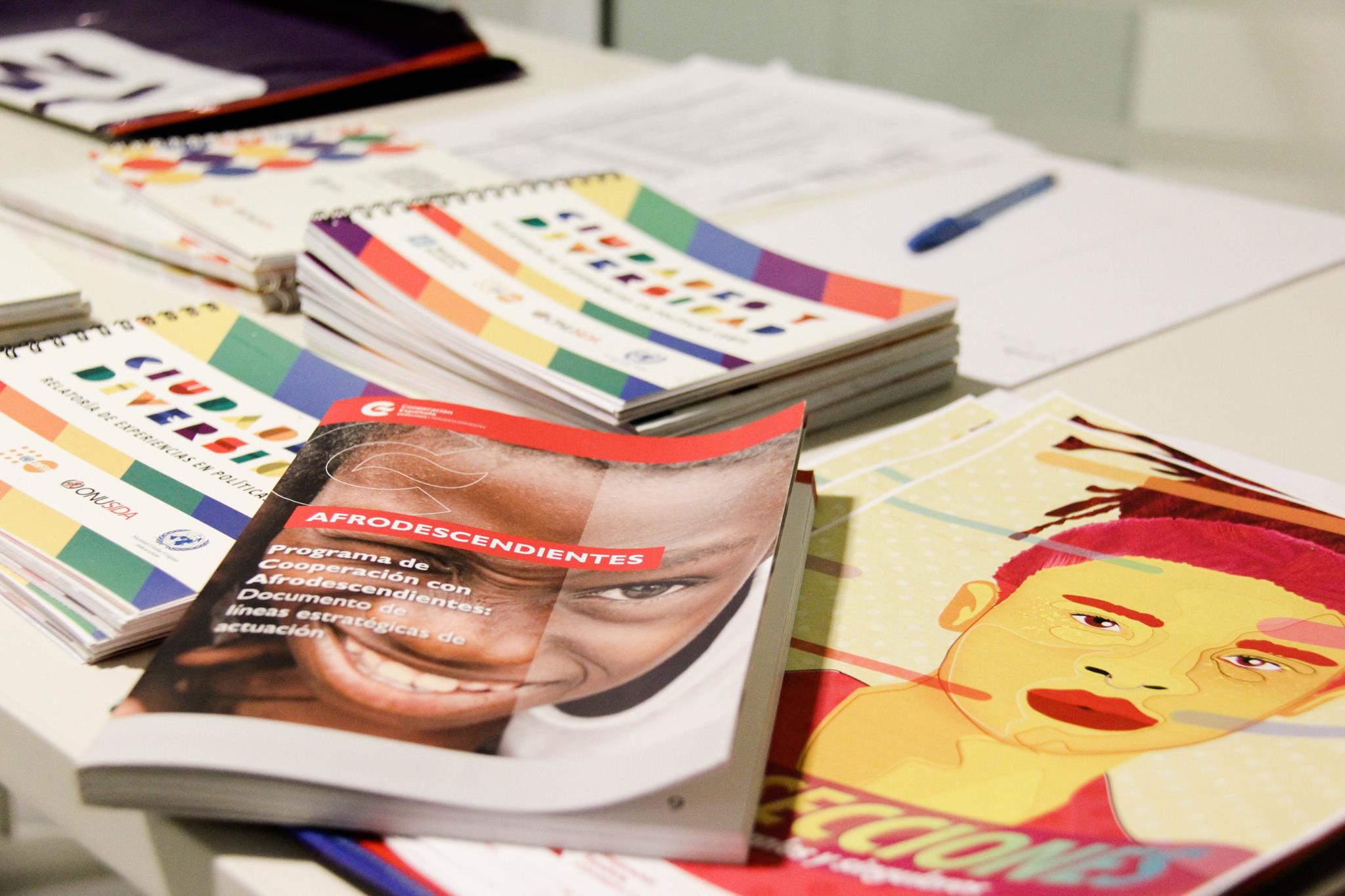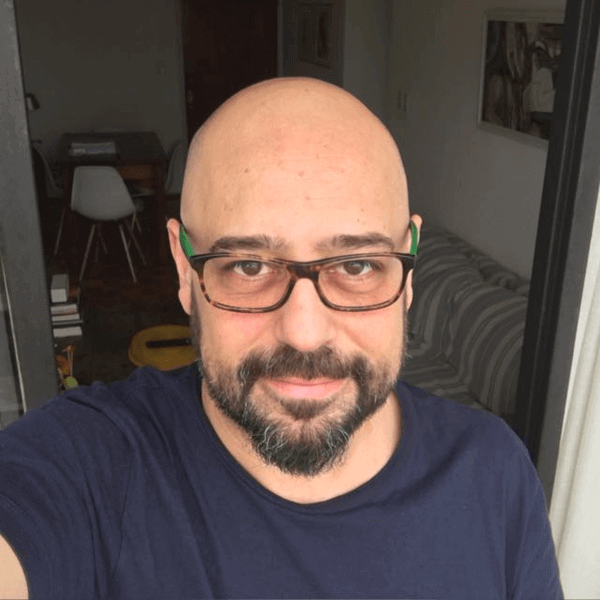 Dialogues on Inequalities - © Intendencia de Montevideo
Dialogues on Inequalities - © Intendencia de Montevideo Dialogues on Inequalities - © Intendencia de Montevideo
Dialogues on Inequalities - © Intendencia de Montevideo Dialogues on Inequalities - © Intendencia de Montevideo
Dialogues on Inequalities - © Intendencia de Montevideo
City
Montevideo
Main actors
City Government, NGO / Philanthropy, Community / Citizen Group
Project area
Whole City/Administrative Region
Duration
2017 - 2018
Design of local policy agenda that addresses the principle of intersectionality
The “Intersections” programme of meetings aimed to analyze the inequalities that affect LGBTI people through the paradigm of intersectionality in order to focus on these unjust situations, as well as to ensure that these experiences of discrimination are included in the social and governmental agenda, by exploring policies that would incorporate this complex outlook.
As a participatory process of collectively constructing a social and policy agenda, the programme marked an important watershed in the city by promoting dialogues between social movements and public institutions that don’t always find spaces to clearly and openly negotiate.
The Diversity Secretariat was founded on December 29, 2015 in order to promote local policies regarding the rights of LGBTI (lesbian, gay, bisexual, trans and intersex) individuals in Montevideo. At the end of 2015, a series of spaces were created, with the support of the UN Population Fund, to draw up the 2016-2020 Sexual Diversity and Social Equality Agenda. This agenda, with five strategic lines of work, was built around the principles of human rights, intersectionality and territory.
A review of the policies implemented at the national and departmental levels has shown that LGBTI people also suffer from other inequalities that make their rights even more vulnerable. The Diversity Secretariat soon realized that the absence of this intersectional perspective has led to a partial or segmented view on inequalities.
The objectives of the Dialogues on Inequalities are:
- To focus on the plurality and singularity of LGBTI people in all their dimensions: gender, ethnic/racial, social class, disability, migratory condition, age, HIV status and incarceration.
- To promote the construction of common agendas among different actors (institutions, civil society, experts and others) that understand the intersection of sexual diversity with other divisions that generate inequalities.
- To design policies and proposals that address the principle of intersectionality.
These dialogues incorporated inspiring interventions from domestic and international experts, who provided the conceptual basis for these exchanges. Social, technical and political organizations were invited to speak about experiences addressing each of the dialogue’s themes.
Before each dialogue began, there was a short period to allow online enrollments via the app of the Spanish Cooperation Educational Center in Montevideo which enabled accurate records to be taken of the participants. Some dialogues lasted for a full day and others only a half-day.
The basic structure of each dialogue was a formal inauguration, a preliminary panel featuring experts, a second panel featuring representatives of government institutions, a third panel with non-governmental organizations and a closing ceremony.
A team from the University of the Republic recorded each dialogue and drafted a summary for later publication. To schedule each dialogue, a meaningful date for the inequality in question was chosen, with the goal of placing these activities within a window of opportunity. In total, there was one inaugural event (establishing the conceptual basis) and nine thematic dialogues.
- March 23: Launch of the “Intersections” cycle.
- March 24: “LGBTI People and Gender”, in Women’s History Month.
- April 27: “LGBTI Families”, on the fourth anniversary of the signing of the Equal Marriage Act.
- July 13: “Afro-LGBTI People”, in African Diaspora Month.
- July 27: “LGBTI People and HIV”, on National HIV Response Day.
- August 23: “LGBTI Children and Adolescents”, in Youth Month.
- October 9: “Elderly LGBTI People”, in Senior Citizens’ Month.
- November 8: “Incarcerated LGBTI People” (without reference to a specific date).
- December 5: “LGBTI People with Disabilities”, for People with Disabilities Week.
- December 13: “LGBTI Immigrants and Refugees”, for International Migrants Day.
Resources came from three sources:
- the Diversity Secretariat
- the UN Population Fund
- the Spanish Cooperation Educational Center
A team specializing in sexual and gender diversity from the University of the Republic’s Political Science Institute will soon publish an account of this programme under its annual agreement with the Diversity Secretariat.
Over 400 people participated in 60 hours of dialogue with 70 experts from eight countries. The Diversity Secretariat’s team evaluated their impact as follows:
- The programme managed to focus on the issues addressed and, with them, the plurality of experiences of LGBTI people. In turn, the LGBTI agenda has become visible in each of the groups addressed: youth, the elderly, the incarcerated, immigrants, etc.
- The idea of intersectionality was deeply rooted in the discourses of the social actors, especially the organizations from the LGBTI community, in which the practice of building ties with other vulnerable communities already has a long history (even when this does not result in long-term work). While among some of the social actors and institutional processes dealing with certain themes, the need to work on the LGBTI agenda resounded with more force. The African Diaspora community is one example of the former; the institutions working on incarceration issues are an example of the latter.
- In the framework of the Latin American Coalition of Cities Against Racism, Xenophobia and All Forms of Discrimination, the Diversity Secretariat and the Ethnic-Racial and Immigrant Equity Secretariat of Montevideo launched a local action plan with an intersectional perspective that incorporates the immigrant, indigenous, African Diaspora and LGBTI populations.
- In some communities, such as the LGBTI, African Diaspora, immigrants and HIV-positive communities, and in some institutions, such as those working on incarceration, youth or the elderly, the dialogues seem to have promoted intersectional agendas (strengthening existing processes or generating new ones).
- The project of “Intersectionality in Metropolitan LGBTI Policies” was enriched by the “Intersections” experience, allowing the lessons learned to be shared in other cities and thus advance in the preparation of a manual for the design and monitoring of local policies with this focus.
One barrier that was present throughout this cycle had to do with the knowledge available on each theme. The most interesting dialogues were those in which there were already precedents. The absence of these in some dialogues was balanced with the stimulating interventions from experts or testimonies that contributed to the discussion. In cases in which there is neither expert knowledge nor practical experience, complementary methodologies should be explored.
Another barrier was that, in some dialogues, there didn’t seem to be a minimum common language. This was clear in the dialogue on LGBTI people with disabilities, for example, in which the disabled community did not understand the symbolic world and terminology of sexual and gender diversity, and vice versa. The existence of non-heterosexual orientations or unexpected gender identities among people with disabilities seemed to be a rarely addressed issue among the organizations working in this community.
One challenge was ensuring a proper understanding of intersectionality (and avoiding the risk of using the word without this real understanding, thinking of it as a mere aggregation of discriminations).
Another challenge was to find concrete policy tools (in terms of diagnostics, but also in design and monitoring) that could implement the conceptual richness provided by the idea of intersectionality.
Finally, it is also a challenge to provide tools so that social organizations that wish to carry out projects on these issues have the resources to do so. The Intersections grant fund will soon be launched, designed to finance actions that have an intersectional focus.
- Just one intersection cannot be conceptualized. Male-female inequality, ageism and, particularly, social class run through all other inequalities.
- This experience is surely transferable to other cities, given prior analysis and an adjustment of the issues and themes that are most relevant to those cities.
- As a result of this experience, the Spanish Cooperation Educational Center has proposed the creation of a regional course for social actors and public servants that incorporates the lessons learned from this process, which has the potential to be a tool for transferring this experience to other Latin American countries.
Account: issuu.com/secretaria.diversidad
Many of the dialogues are available on video.
Summary video on YouTube: https://www.youtube.com/watch?v=6UVjjEnDAHI.
Photographs of all dialogues: Facebook page of Montevideo Igualitario.
External links / documents
On Map
The Map will be displayed after accepting cookie policy
